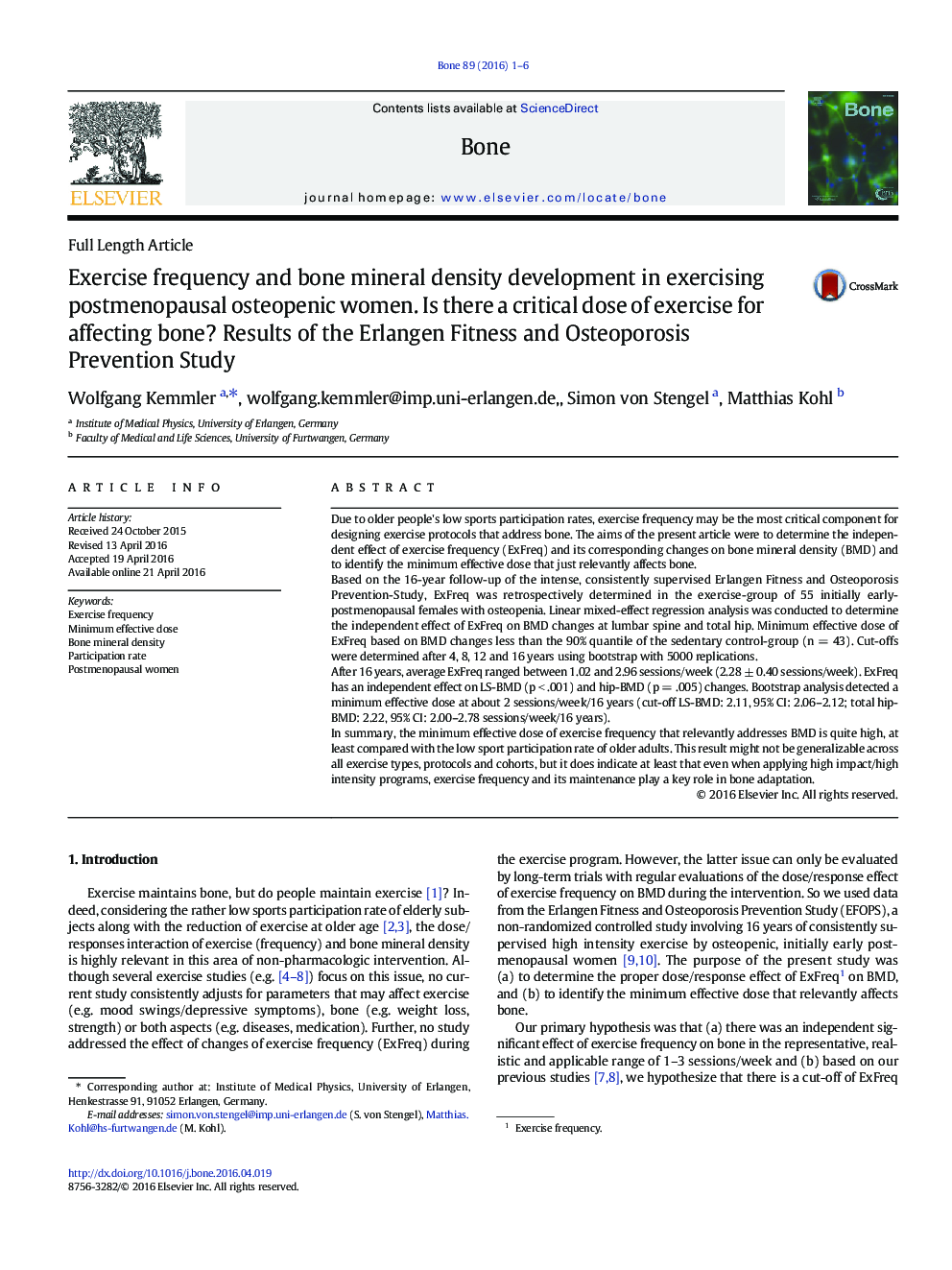| کد مقاله | کد نشریه | سال انتشار | مقاله انگلیسی | نسخه تمام متن |
|---|---|---|---|---|
| 5888903 | 1568130 | 2016 | 6 صفحه PDF | دانلود رایگان |
- Exercise frequency and its maintenance play a key role in bone adaptation.
- The minimum effective dose of exercise averaged around two sessions/week.
- High(er) exercise doses collide with the sedentary status of most older adults.
- (More) time-efficient training protocols may motivate to start and maintain exercise.
Due to older people's low sports participation rates, exercise frequency may be the most critical component for designing exercise protocols that address bone. The aims of the present article were to determine the independent effect of exercise frequency (ExFreq) and its corresponding changes on bone mineral density (BMD) and to identify the minimum effective dose that just relevantly affects bone.Based on the 16-year follow-up of the intense, consistently supervised Erlangen Fitness and Osteoporosis Prevention-Study, ExFreq was retrospectively determined in the exercise-group of 55 initially early-postmenopausal females with osteopenia. Linear mixed-effect regression analysis was conducted to determine the independent effect of ExFreq on BMD changes at lumbar spine and total hip. Minimum effective dose of ExFreq based on BMD changes less than the 90% quantile of the sedentary control-group (n = 43). Cut-offs were determined after 4, 8, 12 and 16 years using bootstrap with 5000 replications.After 16 years, average ExFreq ranged between 1.02 and 2.96 sessions/week (2.28 ± 0.40 sessions/week). ExFreq has an independent effect on LS-BMD (p < .001) and hip-BMD (p = .005) changes. Bootstrap analysis detected a minimum effective dose at about 2 sessions/week/16 years (cut-off LS-BMD: 2.11, 95% CI: 2.06-2.12; total hip-BMD: 2.22, 95% CI: 2.00-2.78 sessions/week/16 years).In summary, the minimum effective dose of exercise frequency that relevantly addresses BMD is quite high, at least compared with the low sport participation rate of older adults. This result might not be generalizable across all exercise types, protocols and cohorts, but it does indicate at least that even when applying high impact/high intensity programs, exercise frequency and its maintenance play a key role in bone adaptation.
Journal: Bone - Volume 89, August 2016, Pages 1-6
